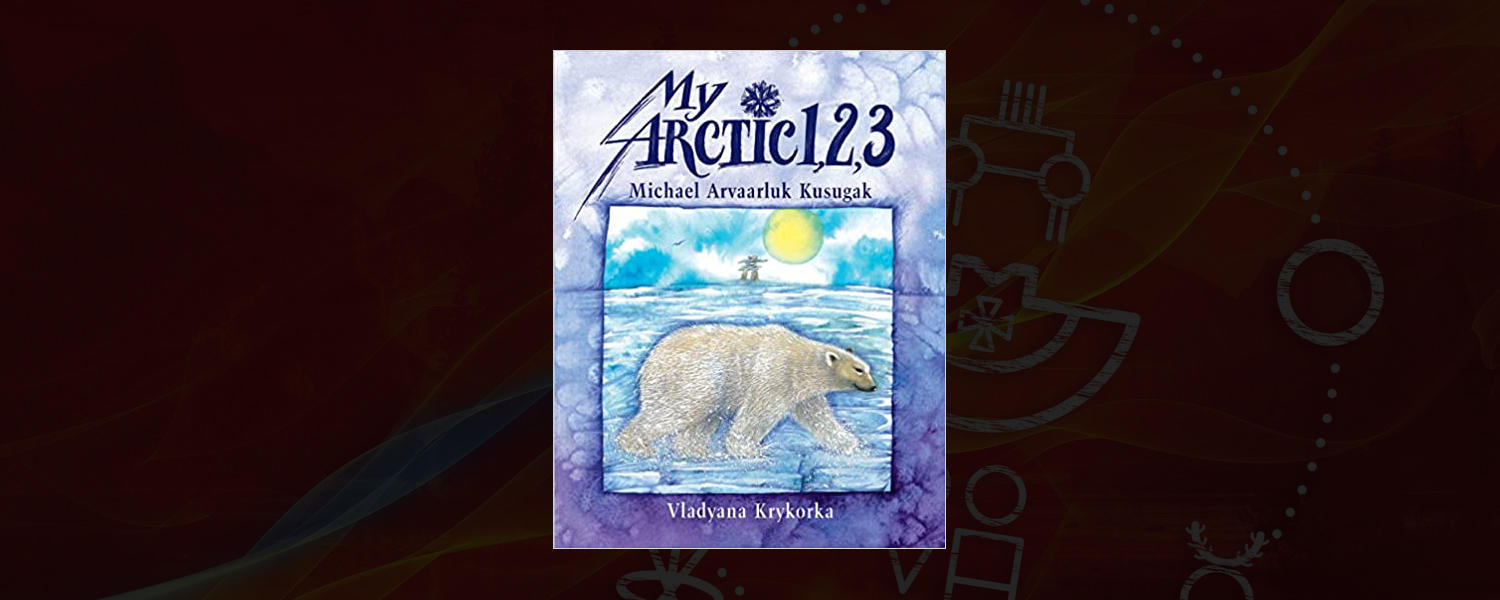
My Arctic 1, 2, 3
by Michael Arvaarluk Kusugak & Vladyana Langer Krykorka
Description:
Publisher's description (Annick Press):
Whether you’re a returning guest or a first-time visitor, enter My Arctic 1, 2, 3 and explore Michael Kusugak’s world of animals and adventure in the Arctic Circle.
On each two-page spread, discover counting and creatures, and learn who’s predator and who’s prey. Witness five Arctic foxes hunting six furry siksiks. Then watch seven fishermen catch eight Arctic char. Numbers explored include 1 to 10, 20, 100 and even 1,000,000 (millions of berries ripen in the fall).
Each scene, rendered in Vladyana Krykorka’s breathtaking paintings, is awash in Arctic colors and includes the depicted number in English and Inuktitut. For those wanting more Inuit info, a special end section by Arctic-native Kusugak recounts his experiences living in the north along side the animals featured in the book.
With Arctic animals and number fun, it’s no surprise My Arctic 1, 2, 3 has become a book for families to share, cherish, and count on.
Author and illustrator biographies (https://www.michaelkusugak.com and Annick Press):
Michael Kusugak grew up in Repulse Bay, NWT (now Nunavut). During his childhood, his family travelled by dog sled, living a traditional Inuit lifestyle. He is the author of twelve children's books, including: The Littlest Sled Dog, The Curse of the Shaman, T is for Territories, Northern Lights: The Soccer Trails, winner of the Ruth Schwartz Award; Hide and Seek; My Arctic 1, 2, 3; and Baseball Bats for Christmas; and was co-writer of A Promise Is a Promise (with Robert Munsch). Michael Kusugak lives in Sooke BC, and spends most summers in his cabin in Rankin Inlet, Nunavut.
Vladyana Krykorka has illustrated and designed over 30 books for children. Her work has received numerous awards, including the Toronto Public Library’s recognition of Baseball Bats for Christmas as one of the 100 best children’s books of all time. In the last two years she has conducted art workshops in several Quebec Arctic communities, working with Inuit teachers in the creation of their own books and class materials, as well as textile printmaking techniques.
Resource format: Picturebook
Age recommendation: Kindergarten to Grade 2
Keywords: Artic, Inuit, Hudson Bay, animals, counting, language pronounciation, Artic circle, seals, caribou, whales, kamiik, boots, igloos, soapstone, warm clothing, maktaaq, whale skin, dogs, seasons, hunt, polar bear, ice flor, ringed seals, spring, orca, bowhead whale, Marble Island, arctic fox, siksik, ground squirrel, fishermen, arctic char, snowy owls, lemmings, dwarf willow, wolf, wolves, migration, berries, Rankin Inlet, Nunavut, tariuq, tundra, snowmobile, sled, fish spear, wier, musk-ox, ice fishing, blueberries, cranberries, raspberries
Year of publication: 1996
Publisher information: Annick Press
Teaching and Learning Ideas
Our team collaborated with new teachers, alumni of the Werklund School of Education’s Bachelor of Education program, to create teaching and learning plans for texts in this website. With audiences ranging from Pre-Kindergarten to Post-Secondary, lesson plans across this resource address a wide range of school subject areas, inclusive approaches, and Indigenous education topics, such as the revitalization of Indigenous languages. As this website was designed with Undergraduate Programs in Education instructors, as well as teachers in mind, connections to UPE courses have been flagged on each lesson plan. These lessons are intended as a starting place for educators, to help you envision ways in which you might bring Indigenous literatures, as well as ways of knowing, being, and doing, into your teaching contexts. Please adapt, use, and share these lessons in ways that are generative for your teaching practice. We offer our sincere thanks to the dozens of new teachers who gifted us with these creative ideas!
Return to Search for Resources
